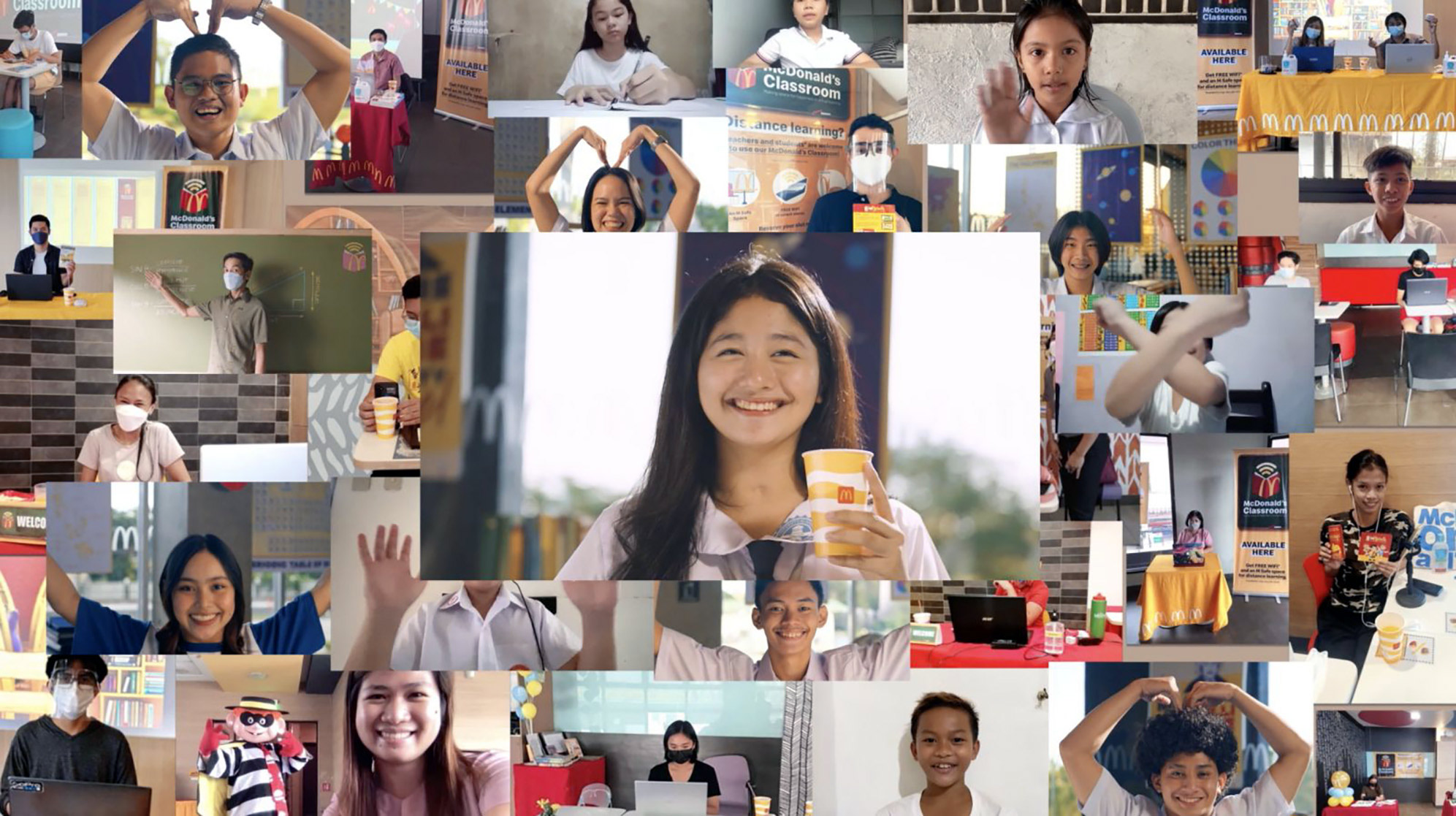
A Space to Teach
At the height of the pandemic in 2020 the McDonald’s Classroom initiative in the Philippines helped teachers around the country negotiate the pitfalls of distance learning.
There are few things in the world that Rebecca Vasquez holds dearer than her kids and dogs.
But the high-school teacher admits that the limits of her affection were occasionally stretched as she conducted online classes from her home during the pandemic.
“It was so noisy,” recalls Vasquez, who teaches at Gat Andres Bonifacio High School in Metro Manila. “My dogs would bark while I was trying to teach. And my own kids were studying in the same room. There was no escape. It was also hot, and the internet connection was unstable.”
Around the globe, the pandemic compromised the ability of teachers to do their job. Lockdowns and online learning made it hard for students to learn effectively and interact with their educators and peers.

In the Philippines, which had one of the world’s longest lockdowns, face-to-face learning was suspended in March 2020, face-to-face learning only partially resumed at the end of 2021 with pilots being carried in selected schools, and grade levels.
Teachers and pupils struggled through teaching and learning due to slow internet speeds, inadequate internet coverage, cramped living conditions, and a lack of access to home computers — especially in lower-income households.
Look For The Golden Arches
With dine-in services and public gatherings restricted across the country, McDonald’s Philippines decided to put its empty party rooms to good use, introducing the McDonald’s Classroom initiative. Party rooms were transformed into quiet spaces for teachers to conduct virtual classes, offering a clean environment with stable internet connections and increased privacy.
In 2020, over 240 McDonald’s Classrooms were opened all over the country to serve hundreds of teachers. The initiative continued in 2021 with more (249) classrooms made available for both teachers and students. Morning and afternoon time slots of up to four hours could accommodate two persons each, with teachers and students getting free snacks, a care kit, virtual backgrounds to choose from, and use of complimentary Wi-Fi.
After hearing about the initiative, Rebecca Vasquez seized the opportunity to improve her work environment. She began conducting lessons from a local McDonald’s Classroom several days each week and found that the move was a revelation.
“It was so quiet,” she says. “I could finally hear myself think! I was the only person using the McDonald’s Classroom at my local branch, so it was like having a private office.”
In addition to the peaceful, air-conditioned work environment, she cites stable internet as another advantage of the McDonald’s Classroom.
I was no longer lagging or buffering when I was teaching the kids. At home, I would struggle to complete a lesson. In the McDonald’s Classroom, the fast and reliable connection enabled me to do everything I needed.
Rebecca Vasquez, teacher, Gat Andres Bonifacio High School
The shift also benefited her pupils, whose ages range from 15 to 17-years-old.
“It was so much better when Miss Vasquez moved to McDonald’s,” says John, a 17-year-old pupil at Gat Andres Bonifacio High School. “It was a nice work environment for her which helped her do her job better. Her lessons were a lot clearer allowing us to feel more at ease during online classes.”
Educators like Vasquez say that initiatives such as the McDonald’s Classroom were invaluable in helping teachers catch their breath while facing the challenges posed by distance learning. Nevertheless, even these can only go so far.
Long Term Learning Loss
In a survey carried out by the United Nations children’s agency in May 2021, 84% of parents in the Philippines observed that, despite spending more time helping them, their children were learning less with distance learning than through traditional in-person learning.

In one of the starkest warnings yet, the Philippines National Economic Development Authority (NEDA) estimated in September 2021 that prolonged school closures could result in a productivity loss of over $200 billion over the next 40 years.
“Grades have dropped because students haven’t been able to cope,” adds Vasquez. “Many of them don’t have money to buy enough data to download modules. Others don’t have the equipment or space to learn at home.”
The resumption of face-to-face classes, albeit with hybrid learning and limited class sizes, has boosted teachers and kids. But as the Philippines transitions to an endemic Covid-19 reality, the impact Covid has on education will continue.

McDonald’s Philippines, majority owned and operated by George Yang (Chairman & Founder) and Kenneth Yang (President & CEO), has pledged to lend support whenever it can. Through its Ronald McDonald House Charities, they have partnered with the Department of Education to increase reading materials in schools, as well as supporting the annual Brigada Eskwela (National School Maintenance Week) activities, with employees helping to renovate classrooms across the country in preparation for the new school year.
We are committed to helping teachers with initiatives like the McDonald’s Classroom as we navigate through the next normal together. Now more than ever, we need to support our educators in their mission to uplift the lives of children through education.
Kenneth Yang, McDonald’s Philippines President, and CEO




